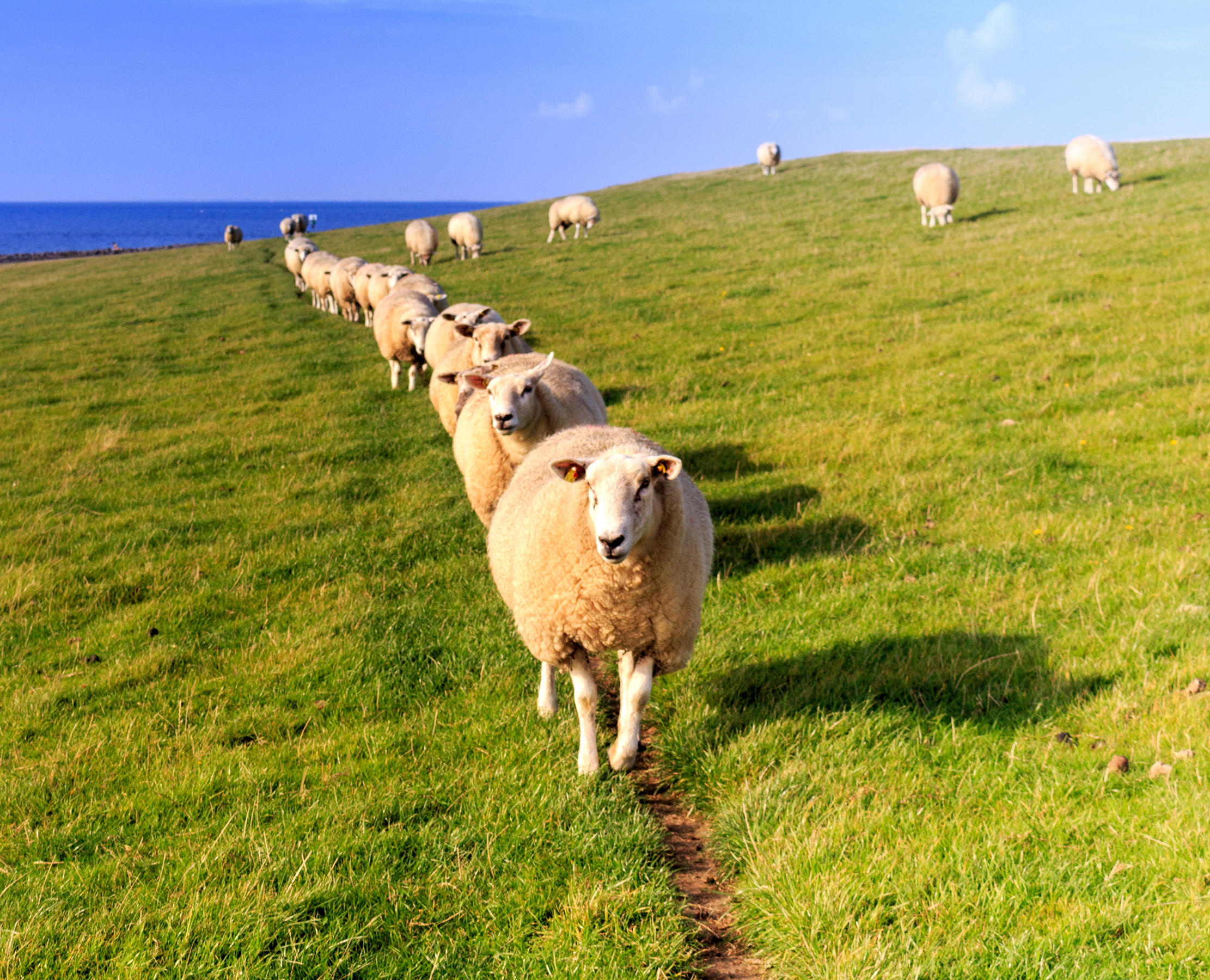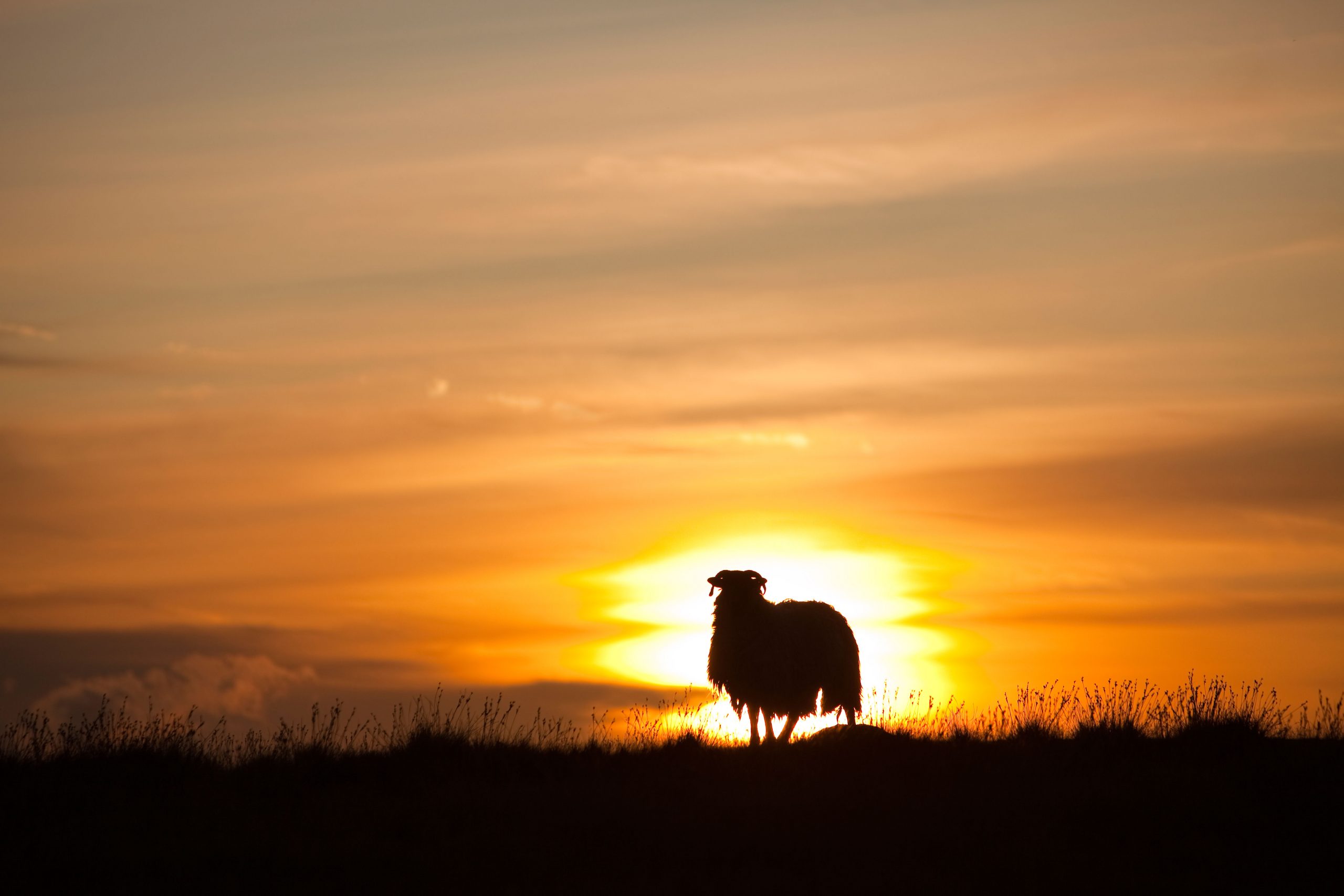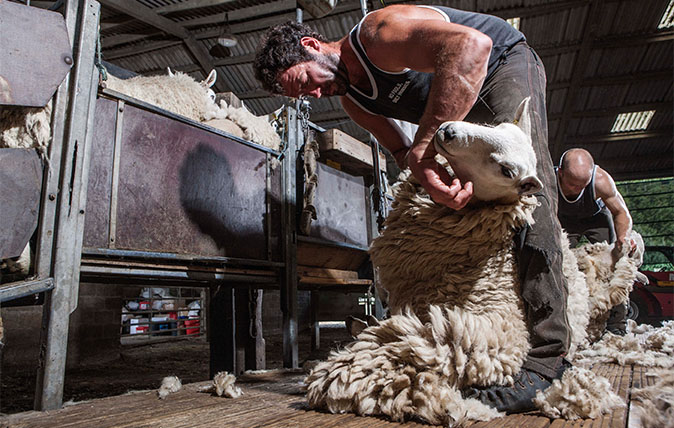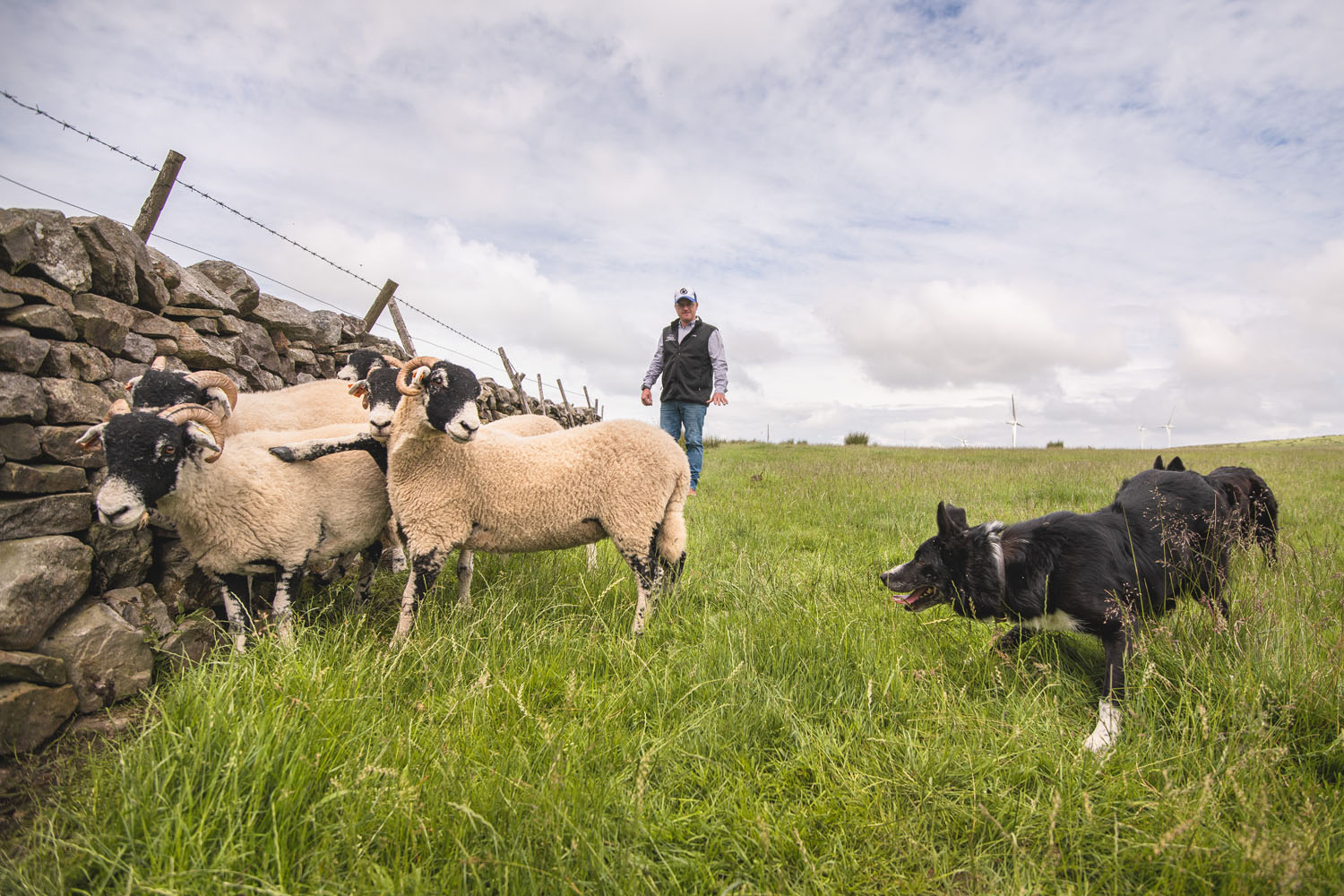The secret life of sheep — and how these supposedly dim animals show guile, fear, and an ability to pick Fiona Bruce out of a line-up
Condemned as dimwits, could sheep really be the brainiacs of the barnyard, capable of fear, boredom, happiness and identifying Fiona Bruce? John Lewis-Stempel delves into the secret life of these curious (in all senses) creatures.


My first memory is preserved in salt spray. I was three and sent off to holiday with Great Uncle Willi, a sheep farmer on the Gower Peninsula. Holding his hand, I would toddle around every evening to check the ewes, their lambs as brilliant white as the fleecy breakers in the Bristol Channel.
Uncle Willi’s Lleyn lambs ‘imprinted’ on the landscape. They fixed it as home in their heads and staked it as such by scent-marking the ground via a gland in their hooves. They were ‘hefted’, knew their place by the sight and smell of it. When Willi retired to the inevitable bungalow, the sheep were sold with the farm. In a sense, I imprinted, too. I became a sheep farmer.
Everybody knows everything about sheep, because there is nothing to know. Sheep hang about on hillsides, baa-ing irritatingly, and are good for nothing except Arran knitwear and accessorising rosemary in the oven at 220˚C. Their timidity has furnished the dictionary with ‘sheepish’ and their pitiful conformity has given us ‘lambs to the slaughter’. In Orwell’s fable Animal Farm, the sheep are the stupidest of beasts.
I was on my very first flock, of Jacobs, when I began to suspect the stereotyping of sheep. These native piebald ovines escaped through my three-strand electric fence as convincingly as water flows through an open sluice. For three days, I was flummoxed — until I caught them red-footed. Their technique was to reverse through the fence, the dense wool on their rears acting as insulation against the shock. My second flock were Hebrideans: the lead ewe, Hilda, devilish black and horned, showed her compatriots how to walk over the cattle grid, the device invented precisely to stop such livestock escapes.

Sheep intelligence? It reads like an oxymoron, to go alongside Microsoft Works and Virtual Reality. The supporting evidence is more than anecdotal. As well as being one of the most farmed animals on earth, sheep are one of the most researched. In test after test, sheep prove to be the brainiacs in the barnyard.
As food is crucial for sheep survival — domesticated sheep, Ovis aries, spend up to 12 hours a day grazing — they need to evaluate an entire smorgasbord of plantstuff. Is it good, is it bad? The Babraham Institute at Cambridge, by recording the electrical output from single cells in the sheep’s brain, discovered that they are single-trial learners. One taste, one lesson learnt. The ability of Larry the lamb to categorise, rank and recall plants is up there with the chimps. In the old days of agriculture, there used to be a ‘hospital field’ on the farm, where sick sheep would be sent to self-medicate. Small wonder.
"For this moment of spectacle, I forgave him for the time he tried to murder me"
Sheep have prodigious memories. A 2001 study found that they can recognise the faces of at least 10 people and 50 other sheep for more than two years. In the oddest academic experiment ever — a competitive category, you feel — sheep were taught to distinguish photos of celebrities. Even with corrupted photographs, 65% of sheep chose the correct answer: Fiona Bruce.
Exquisite houses, the beauty of Nature, and how to get the most from your life, straight to your inbox.
The ultimate accolade in animal intelligence is to be classified as a tool user. As we are. According to S. F. Bates, writing from Cheshire in New Scientist in 1979, local Gritstone sheep scratched away snow to reveal grass by using pieces of wood held in their incisor teeth.
Obviously, a species as smart as the sheep can be taught to come to call. I mention this boastfully, because our Suffolk ram — Action Ram, the begetter of progeny to rival a Biblical patriarch — gave me my proudest moment in my 25 years of shepherding. Once again, he had escaped on an amorous adventure.
My neighbour, Mrs Pryce, telephoned to request his extraction from her pedigree Welsh Mountain flock. Our Land Rover, made by British Leyland, was on sympathetic strike action and the Pryce farm, up a sheer lane, was forbidding with tractor and trailer, so I took the family motor, a Guards-red BMW 3-series estate. At Mrs Pryce’s, I stopped and called ‘Action!’ over the stone wall of the paddock. He came trotting through the field gate and hopped into the boot of the car.
For this moment of spectacle, I forgave him for the time he tried to murder me. ‘Savaged by a killer sheep’ may have the ring of humour, but, when cornered by a 23½-stone Suffolk ram with a head constructed from concrete, butting repeatedly for 20 minutes, the comic potential dissipates. (In the end, I hit him over the head with the flat of an axe. He staggered off and lived for another 10 years.) So much for sheepish meekness.
"Perhaps Action Ram was jealous I had given Tiddlywink, his favourite ewe, attention, a pat on the neck"
Sheep are curious things and sheep farming is a curious old business, where one can become attached to — or even loving of — animals raised for sale, for the pot. That has always been the case. The Old Testament tells, in the second book of Samuel, of a poor man whose pet sheep was ‘unto him as a daughter’.
Mary had a little lamb. Johnny Lewis-Stempel had a big ram. I liked Action Ram, Action Ram liked me. Sheep bond with each other (‘conspecifics’ in the jargon), but also with other animals, even predator humans. So why, on that sultry summer’s day on a hill in Herefordshire, did he attack me?
When we conceive of a flock of sheep as a uniform block of flesh and fleece, we pull the wool over our eyes. A flock of sheep is a society, based on family, friendship and sexual orientation. (About 8% of rams are gay.)
There are also hierarchies. The day Action Ram attacked me, I suspect he was trying to be boss of the flock, the capo dei capi — or perhaps he was jealous I had given Tiddlywink, his favourite ewe, attention, a pat on the neck. I thought he hadn’t noticed, but those horizontal, slit-shaped pupils of ovines allow a peripheral view of 270˚–320˚. Effectively, sheep can see out of the back of their heads. Like grandmas.

I dine out on stories of Action Ram. I condemn the sorrows of shepherding to the dungeon of the mind. One wrenched memory will serve: a Shetland ewe, puppet-sprawled in the bottom of a ditch after trying to fight off a fox from her lamb. I needed to kill the ewe, humanely. I distracted the flock with a bucket of sheep nuts and shot the poor beast with the Lincoln 12-bore.
However, one curious sheep had followed me, seen the killing, gone to the far, far end of the paddock and told the rest of the flock. They stood there in fear of me — ears up like satellite dishes, their ‘tell’ of anxiety. I saw for the first time, like a kaleidoscope settling into a pattern, the ties of emotional loyalty in a sheep’s life.
My own favourite ewe, a black-and-white Shetland called Sooty, had poignantly gathered her daughter and granddaughter about her. Our Shetlands didn’t come near me for weeks. According to the scientific journal Animal Welfare, sheep are capable of experiencing a whole range of feelings, from boredom to happiness. I know they know fear.
"If there are stupid sheep, it is only because we humans have spent 11,000 years making them so"
One must not, of course, be sheepist. All sheep breeds are not alike. The rule of thumb is that the more primitive the sheep, the cleverer it is and the more complex its emotions. Super-bred sheep, such as Texels, have brains 20% proportionately smaller than their wild mouflon ancestors. If there are stupid sheep, it is only because we humans have spent 11,000 years making them so.
I like sheep today as much as I did on those childhood walks with Willi on the cliff-fields of Wales, but I have come to respect sheep, too. After all, they might get their hooves on guns one day, and want revenge.

Credit: Richard Cannon
The sheep-shearer: 'If you tell people what you do, they often don’t know what it involves'
Sheep-shearers are a dying breed, but Ashley Story relishes the back-breaking work. He spoke to Tessa Waugh; portraits by Richard

Shaggy sheep stories: 21 native British sheep breeds and how to recognise them
Here are just some of the breeds to consider, whether for field or table or both.

Sheepdog trials: How farmers' bluster has led to 150 years of enthralling, fascinating competition
The original working trials may have stemmed from banter over whose border collie was better, but, as members of the
